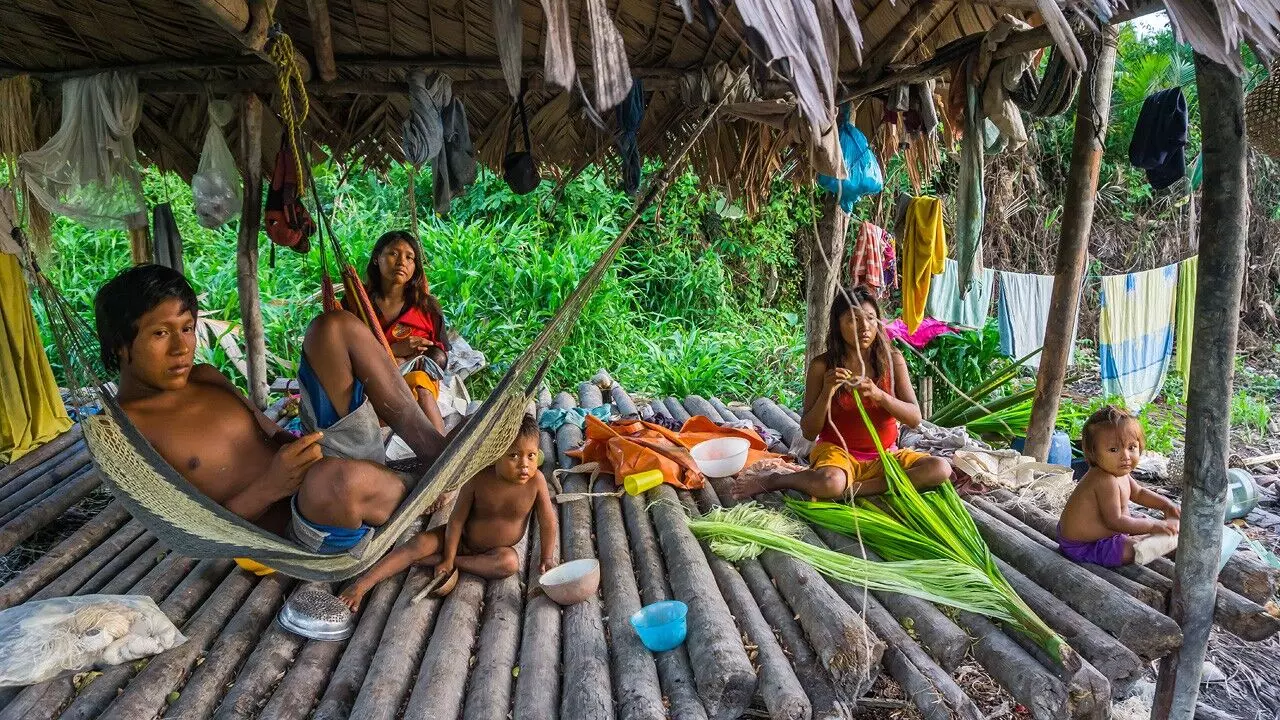TRENDING TAGS :
The Invaluable Role of Tribal Knowledge in Environmental Conservation
Discover how India’s tribal communities contribute invaluable wisdom to environmental conservation. Learn how their traditional knowledge systems, eco-centric rituals, and sustainable practices offer vital lessons in today’s climate crisis.
Tribal (PC- Social Media)
Importance of Tribal Society
When discussions on environmental crises arise, our focus tends to gravitate toward advanced technologies, international agreements, and scientific solutions. In this race, we often overlook an invaluable treasure rooted in our soil—the traditional knowledge of India’s tribal communities. These communities have lived in harmony with nature for centuries, embodying simplicity, balance, and conservation in their way of life. Their customs, faith, and cultural traditions are deeply interwoven with environmental stewardship. At a time when the world faces climate change and ecological imbalance, tribal knowledge offers not only solutions but also an alternative worldview—one that is sustainable, tolerant, and sensitive.
Tribal Philosophy: Coexistence with Nature
Tribal communities like the Gond, Santhal, Bhil, Toda, Baiga, Khasi, Mizo, and others, spread across regions of Chhattisgarh, Odisha, Jharkhand, Madhya Pradesh, Nagaland, Tripura, and Rajasthan, live lives deeply integrated with nature. For them, forests, rivers, mountains, and wildlife are not mere resources but sacred components of life. Trees are revered as deities, rivers as motherly figures, and animals as kin.
The core essence of tribal culture lies in coexistence with nature—they only take what they need, never overharvesting or exploiting. Nature is worshipped, not consumed. Their rituals, festivals, and everyday practices are aligned with ecological cycles and seasons, reflecting their balanced environmental approach.
Traditional Ecological Knowledge (TEK)
Forest Conservation
Forests are considered living beings. Before cutting any tree, special rituals are performed. Many tribes maintain Sacred Groves, where hunting and tree cutting are strictly forbidden.
Biodiversity Preservation
Tribal farming practices like jhum cultivation (shifting agriculture) help maintain ecological balance. They use traditional seed varieties, many of which are now endangered.
Water Conservation
Tribals living in hilly areas have developed natural water collection techniques. Communities collectively clean and maintain ponds, springs, and streams.
Medicinal Plant Knowledge
Tribals are experts in identifying forest herbs and using them for healing—without chemicals. They see protecting these plants as a duty.
Sensitive Farming and Balanced Resource Use
Tribal agriculture is free from chemical fertilizers and pesticides. Their use of indigenous seeds preserves biodiversity. Although jhum cultivation has been debated among scientists, when practiced with ecological understanding and timing, it helps maintain soil fertility.
They never exploit resources beyond their needs. Whether collecting fruits, wood, or herbs from the forest, they ensure enough remains for future generations. This is the essence of sustainable development, which modern society now seeks to learn.
Environmental Messages in Folk Beliefs and Art
Tribal stories, songs, dances, and paintings subtly convey deep environmental wisdom. For example, Gond art’s Pithora paintings feature trees, animals, and natural imagery that symbolize life’s balance. Their deities are nature-linked—forest goddesses, river spirits, and mountain guardians—instilling respect for nature from childhood.
Dealing with Natural Disasters
With increasing natural disasters due to climate change, tribal knowledge offers practical resilience strategies. Some tribes build traditional earthquake-resistant homes from bamboo and mud, suitable for all seasons. In forest fires, they can predict the fire’s direction by observing wind patterns and tree formations—skills that are useful in modern disaster management.
Eco-centric Festivals and Rituals
Tribal festivals and rituals reflect their deep respect for the environment. The Sarhul festival in Jharkhand is celebrated in spring (Chaitra month), worshipping the Sal tree and praying for forest conservation, good harvests, and community well-being.
Similarly, the Karma festival, observed in Chhattisgarh, Jharkhand, and Bihar, honors the Karam tree, invoking blessings for rain, crops, and prosperity. Trees are worshipped before being cut, reflecting reverence for nature. Other rituals include forest and river worship, ingraining environmental values in children from a young age.
Role of Tribal Women
Tribal women are the primary custodians of environmental knowledge. They preserve seeds, identify medicinal plants, and handle water collection, fuel, and food storage. Their role in sustainable resource use and conservation is crucial. Not only do they uphold traditional practices, but they also pass them on to future generations—making tribal women the foundation of sustainable living.
Threats to Tribal Knowledge from Modern Development
Today, industrialization, mining, deforestation, and large dams have severely impacted tribal life and culture. Many are displaced from ancestral lands, leading to the slow extinction of age-old knowledge systems. Though tribal children now receive modern education, they are increasingly disconnected from their cultural roots and ecological wisdom.
Biodiversity also suffers as forests once inhabited by tribals are being destroyed for commercial projects. This is a grave threat not only to the environment but also to India’s cultural heritage.
The Need to Preserve Tribal Knowledge
Policy Support
The government must treat tribal knowledge as an asset and implement policies for its preservation.
Protection of Tribal Rights
Laws like the Forest Rights Act must be enforced effectively to keep tribals connected to their lands and traditions.
Educational Inclusion
Tribal knowledge must be integrated into school and university curricula.
Promotion of Local Products and Practices
Encourage jhum farming, traditional seeds, and herbal medicine as part of agricultural science.
Community Participation
Tribal communities must be made active partners in all environmental projects.
Inclusion of Tribal Wisdom in Environmental Policy
Global institutions like the United Nations and IPCC now acknowledge that indigenous and local knowledge can enhance the effectiveness of environmental policies. In a country like India, facing escalating ecological crises, it is imperative to incorporate tribal experiences and perspectives into policymaking.
There are many examples in India where traditional knowledge and public resistance have played a vital role in environmental conservation. The Chipko Movement in Uttarakhand, led by rural women who hugged trees to prevent deforestation, became a symbol of ecological activism.
Similarly, the Narmada Bachao Andolan saw tribal communities fighting to preserve the biodiversity and human heritage of the Narmada valley. These movements prove that traditional wisdom and community action are no less than modern solutions.
Conclusion: The Living System of Sustainability
In conclusion, tribal knowledge is not outdated folklore—it is a living, breathing system of sustainability. In a world searching for environmental solutions, India’s tribal communities hold keys to a harmonious future between humanity and nature.


